#Southwest Archeology
Text

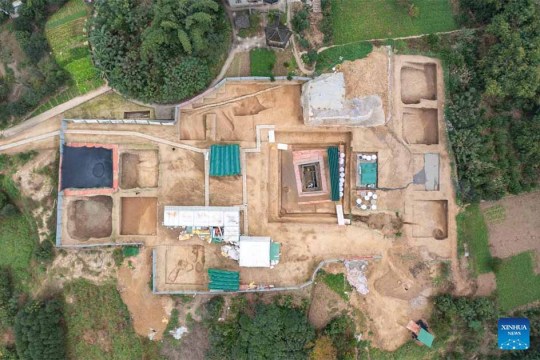
A Rare Western Han Dynasty Tomb Found in Southwest China
A well-preserved tomb, dating back to the Western Han Dynasty (202 BC-25 AD), with a clear recorded year has been discovered in Wulong District of southwest China's Chongqing Municipality, the Chongqing Cultural Relics and Archaeology Research Institute said Tuesday.
This archaeological project is a rescue excavation and protection work carried out to forge cooperation with the Baima project, the last of a cascade of hydropower stations on the section of the Wujiang River in Chongqing.
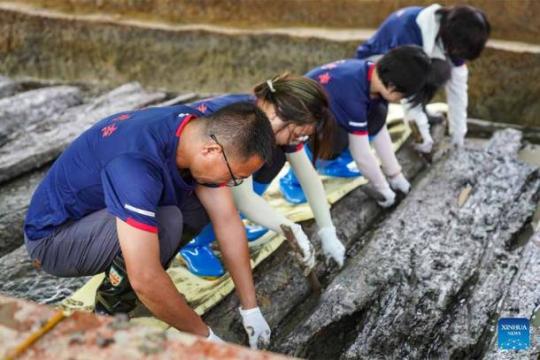

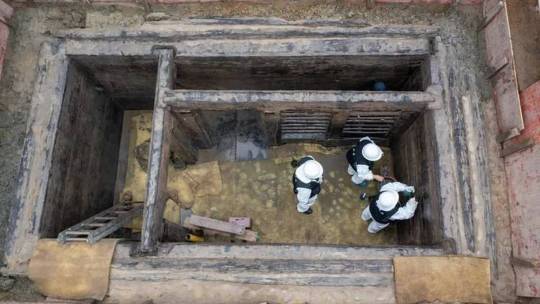

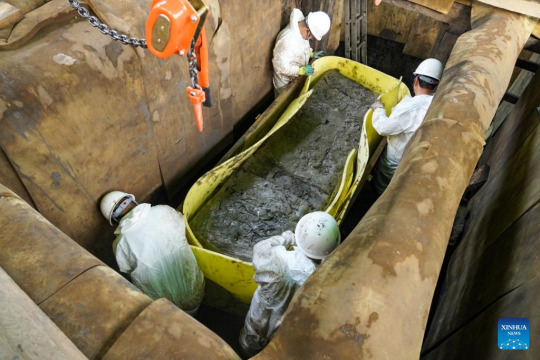

With the approval of the National Cultural Heritage Administration, the Chongqing Cultural Relics and Archaeology Research Institute set up a work team of more than 20 people from different archaeology research institutes and universities to excavate the site in March this year.
According to Huang Wei, the leader of the archaeological project, a collection of tombs dating from the Han Dynasty (202 BC-220 AD) to the Six Dynasties period (222-589) were newly discovered as part of this project. Among them, the tomb dating back to the Western Han Dynasty was the most important, and more than 600 precious cultural relics such as lacquerware, wood ware, bamboo ware, pottery and bronze ware were unearthed from the tomb.

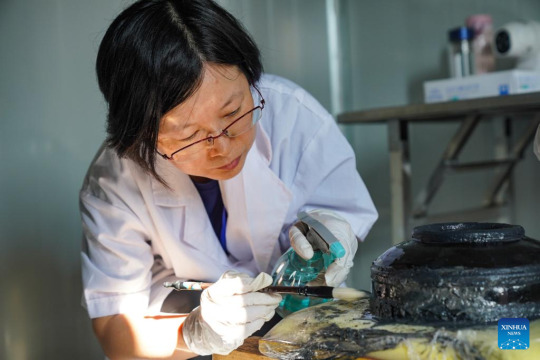
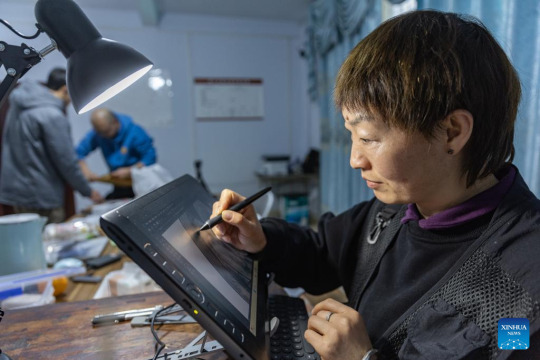
Due to the tomb being filled with water throughout the year, it remains undisturbed and unharmed, and the funerary objects in the tomb are well preserved.
"What is exciting about this discovery is not just the large number of unearthed artifacts but also the list of burial items containing a precise year record, which has been verified as 193 BC, providing clarity on the tomb's burial timeframe. An unearthed jade ware from the tomb shows the prominent position of the tomb owner," Huang said.
The list of burial items found in the tomb is complete and clearly records the name, quantity and size of the funerary objects.
The tomb discovered this time is the one containing the largest quantity of lacquered wood and bamboo wares ever found at one time in the upper reaches of the Yangtze River in China, said Bai Jiujiang, head of the Chongqing Cultural Relics and Archaeology Research Institute.

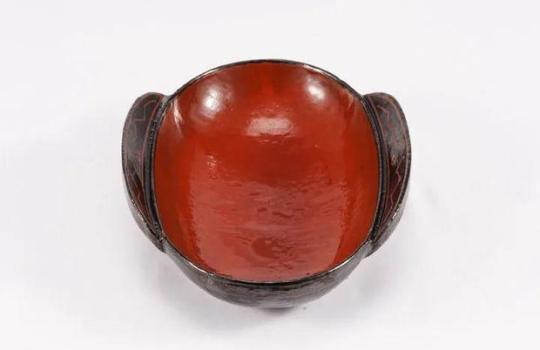

Based on publicly available information, it is also the earliest tomb of the Western Han Dynasty found in China, with a clear recorded year, according to Bai.
This is a major archaeological discovery regarding the Qin and Han Dynasties in the Wujiang River Basin, offering physical evidence and important basic research materials for future study of burial customs and the comparative analysis of famous artifacts from the early Western Han Dynasty, according to the archaeologists.
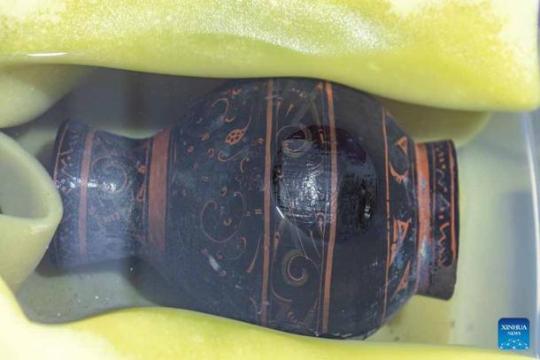

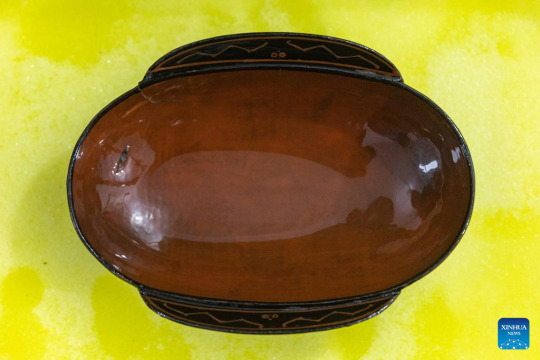

#A Rare Western Han Dynasty Tomb Found in Southwest China#Tomb Holding Hundreds of Ancient Relics Unearthed in China#Western Han Dynasty#ancient tomb#ancient grave#grave goods#ancient artifacts#archeology#archeolgst#history#history news#ancient history#ancient culture#ancient civilizations#ancient china#chinese history#chinese art
63 notes
·
View notes
Text
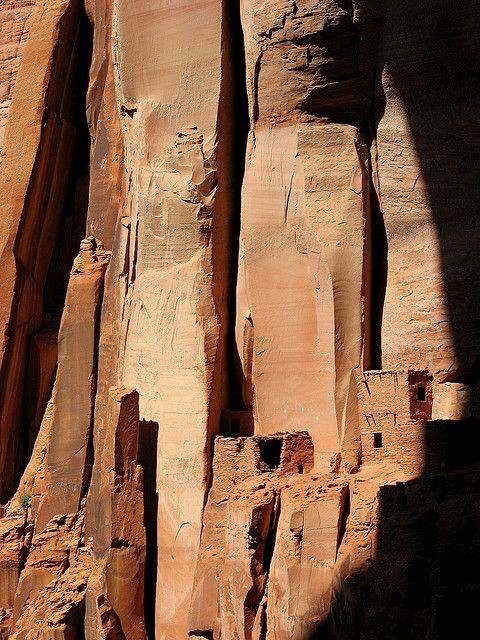
HARMONY IN STONE
#arizona#navajo#national monument#betatakin#cliff dwelling#ancient#ruins#native american#archeology#sandstone#southwest#desert#american indian
29 notes
·
View notes
Video
Ruins of the adobe church at Pecos Historical Park by Jim Scully
Via Flickr:
Part of the original mission church remains and can be seen in the Pecos National Historical Park near Pecos, New Mexico.
#Pecos#New Mexico#ancient pueblo#Towa#ngc#national historical park#church#adobe#archeological site#Native American#flickr#Southwest#Snow#Winter
10 notes
·
View notes
Text
hello again!
I’ve recently decided to revamp this account, in the hopes to share more about my passion and love for archaeology! I’m currently an archaeology student and I’m about to complete my Bachelors degree. I recently finished two archaeology internships with well-respected institutions within archaeology. Most of my work focuses on the prehistoric Southwestern United States, but I love archaeology all around! If you have any questions about the field, my experience in it, or questions about how to get started please ask!
1 note
·
View note
Text
STARR COUNTY, Texas — The Biden administration announced today that for the first time it will waive environmental, public health and cultural resource protection laws to fast-track construction of the U.S.-Mexico border wall in Texas. The administration says it will take “immediate action to construct barriers and roads” along the border, including through fragile habitat near the Lower Rio Grande Valley National Wildlife Refuge.
“It’s disheartening to see President Biden stoop to this level, casting aside our nation’s bedrock environmental laws to build ineffective wildlife-killing border walls,” said Laiken Jordahl, Southwest conservation advocate at the Center for Biological Diversity. “Starr County is home to some of the most spectacular and biologically important habitat left in Texas and now bulldozers are preparing to rip right through it. This is a horrific step backwards for the borderlands.”
The waiver sweeps aside 26 laws that protect clean air, clean water, public lands, endangered wildlife and Indigenous grave sites. The announcement marks the first time the Biden administration has used the REAL ID Act waiver authority.
“Every acre of habitat left in the Rio Grande Valley is irreplaceable,” said Jordahl. “We can’t afford to lose more of it to a useless, medieval wall that won’t do a thing to stop immigration or smuggling. President Biden’s cynical decision to destroy crucial wildlife habitat and seal the beautiful Rio Grande behind a grotesque border wall must be stopped.”
Wall construction in Starr County could harm recovery plans for endangered ocelots, which depend on contiguous wildlife corridors of protected habitat along the Rio Grande. Two endangered plants, the Zapata bladderpod and prostrate milkweed, are endemic to the area and will likely also be threatened by wall construction with their protections stripped by the waiver.
Last month, the U.S. Government Accountability Office released a damning report detailing the severe damage the border wall has caused to wildlife, public lands, and Indigenous sacred sites and burial grounds along the U.S.-Mexico border.
Beyond jeopardizing wildlife, endangered species and public lands, the U.S.-Mexico border wall is part of a larger strategy of ongoing border militarization that damages human rights, civil liberties, native lands and international relations. The border wall impedes the natural migrations of people and wildlife that are essential to healthy diversity.
Today’s action seeks to waive the following laws:
1. National Environmental Policy Act
2. Endangered Species Act
3. Native American Graves Protection and Repatriation Act
4. American Indian Religious Freedom Act
5. Federal Water Pollution Control Act
6. National Historic Preservation Act
7. Migratory Bird Treaty Act
8. Migratory Bird Conservation Act
9. Clean Air Act
10. National Wildlife Refuge System Administration Act
11. Eagle Protection Act
12. National Fish and Wildlife Act of 1956
13. Fish and Wildlife Coordination Act
14. Archeological Resources Protection Act
15. Paleontological Resources Preservation Act
16. Safe Drinking Water Act
17. Archaeological and Historic Preservation Act
18. Noise Control Act
19. Solid Waste Disposal Act, as amended by the Resource Conservation and Recovery Act
20. Comprehensive Environmental Response, Compensation, and Liability Act
21. Antiquities Act
22. Historic Sites, Buildings, and Antiquities Act
23. Farmland Protection Policy Act
24. National Trails System Act
25. Administrative Procedure Act
26. Federal Land Policy and Management Act
(October 4th, 2023)
#death to america#borders#settler colonialism#colonialism#environment#biden#us politics#dhs#mexico#texas#my uploads#my uploads (unjank)
101 notes
·
View notes
Text

Archeologists have unearthed the lost remains of a Teotihuacan village, including human burials, in the heart of Mexico City.
Ceramics found scattered around the site, which is located 1.5 miles (2.4 kilometers) northwest of the city's historical center, indicate the village dates from around A.D. 450 to 650 and may have housed a community of artisans and craftspeople.
"The finding was surprising," said an archaeologist at Mexico's National Institute of History and Anthropology (INAH) Directorate of Archeological Salvage, who co-led the dig. "It shows that 1,300 years ago, the islets inside Lake Texcoco, on which Mexico City was founded [after the lake was drained], already supported a permanent population that took advantage of the resources of the lake environment," he told Live Science in an email.
The newly excavated settlement may have formed during the "ruralization" of Teotihuacan, an ancient metropolis that flourished in the highlands of what is now central Mexico between A.D. 100 and 650.The village is located 25 miles (40 km) to the southwest of Teotihuacan and may have been one of several small towns that supported themselves through subsistence farming and fishing as the ancient city reached its zenith. These settlements maintained commercial ties to Teotihuacan, and the new discoveries shed light on the role these settlements played in the city's supply network.
"The discovery is rare because it occurred in a fully urbanized context where the possibility of finding archeological evidence associated with the Teotihuacan culture was very low," he added.
Gifted craftspeople
Archeologist Francisco González Rul discovered the first clues of this village's existence in the 1960s, during construction works in the Mexican capital. Based on ceramics he unearthed, González Rul suggested at the time that the inhabitants were self-reliant fishers and gatherers. The new excavations confirmed this.
Several previously unseen architectural structures — including post holes, flooring, channels and an artesian well — as well as ceramics have come to light. The excavation also unearthed three human burials containing the skeletons of two adults and a child.

Teotihuacan was an ancient metropolis that flourished in the highlands of what is now central Mexico.
Teotihuacan ceramics are categorized into phases, according to a 2016 study in the journal PLOS One. The newfound ceramics displayed features that correspond to the Xolalpan (A.D. 350 to 550) and Metepec (A.D. 550 to 600) phases in the 2016 study, which enabled the researchers to date the remains of the village and its inhabitants.
The Teotihuacans were gifted artists and craftspeople, said a professor of archeology and director of the Teotihuacan Research Laboratory at Arizona State University. "To decorate the walls of their houses and temples, the Teotihuacanos used the same fresco technique used by Michealangelo to paint the Sistine Chapel," told the professor Live Science in an email. "They also used the fresco technique on ceramic vessels."
The ceramics could reveal important information about trade with Teotihuacan through chemical analysis, said the professor.
Archeologists have concluded the excavations and are now analyzing the discovered materials and bones. Much of Teotihuacan's sprawling architecture remains buried, but the site is largely unaffected by modern construction and will eventually be unearthed in its entirety.
#🇲🇽#mexican archaeologists#mexico#Francisco González Rul#indigenous#native#Teotihuacan#mexico city#National Institute of History and Anthropology#INAH#Michealangelo#fresco technique#Lake Texcoco
44 notes
·
View notes
Text
The Mithril Archipelago, more colloquially known as the Pious Pools, refers to a cluster of islands to the southwest of Tetrahex an orn and some groon out from the shore. When seen from above, the island chain appears to form a large hand rising from the sea, with the ‘palm’ being the largest of eight.
Despite being collectively referred to as the Pious Pools, the most notable tide pools are largely clustered on the eastern side of the palm, index, and middle islands, while the largest natural springs are located on the thumb.
All of the islands in the archipelago are quite rocky, but the hotspot at the base of the thumb has historically produced a notable number of amphibious mecha and triple-changers with alt modes suitable for both the cliffside environment and the warm Mithril Sea.
Most locals live in the center and southeast portions of the palm closest to the thumb, though there are smaller fishing and tourism based areas on the index, middle, and ring fingers. The Pious Pools are well-known for the peculiar traditional architecture of the area, which comes from a mix of the islands originally being settled as a hermitage and simple practicality; most buildings and residences are tucked inside and built out of the natural caves formed by sea erosion over millions of years, or otherwise secured into the sheer cliffs in tiers!
If you wish to visit the ruins of the hermitage, the Little Temple (also known as the Conduit or the First Temple,) please be aware that there is an active and ongoing restoration project underway to restore the damage that occurred under the Functionist Mandate of Singularity. There is a priest in residence and dormitory space available to those devoted or simply curious. Liturgical services are held every orn at 08.45j and end of decacyle services at 17.15j/18.15j depending on the season.
The Iaconian Academy of Science and Medicine has recently reestablished the historical outreach campus of the Grand Archives in the curve between the middle and ring fingers with the help of Deltaran Hospital and Optimus Prime, who has taken up semi-permanent residence on the islands to assist with preservation and archeological efforts.
The tips of the index and middle fingers are recognized by Primal Authority as a preservation site and mechanimal sanctuary. Permits are required for hunting and fishing in the area.
The two islands that make up the smallest finger are generally considered to be uninhabitable, as the middle island and the spit of land that bridges it to the palm is flooded each day at high tide, and the last of the two has recently become the source of a great many strange sightings and ghost stories. Visitors are highly discouraged from lingering.
13 notes
·
View notes
Text
Distinct but connected- comparing and contrasting Hebitians and Cardassians
One of my goals when writing Hebitians and Cardassians is I wanted them to be cultures with a long, not necessarily violent history prior to colonization under the Cardassian Union, with some level of exchange/relatedness, but also distinct, because I feel it's a dynamic people don't acknowledge as much.
Starting from their environment, Cardassians started as a polytheistic* pastoral community on the southwest of the equatorial contenient on Cardassia Prime, mostly in the desert directly south of the Valley of the Hebitians and the mountains further south of that. Over time, most Cardassians settled in the mountains and subsequently diverged, culturally, from those who retained pastoral life. Pastoral and settled Cardassians maintained necessary trade and kin relations long after, and pastoralism is still common in animal based Cardassian agriculture. The class system that brought the idea of the service class developed after mountain settlement, and the pastoral community is essentially outside of it (a status marked by their family seals having a circle border, instead of the polygonal borders used to designate class). The legal and social status of pastoral Cardassians is complex; other forms of iternancy are restricted, and in some ways the relationship between settled and pastoral Cardassians has degraded. Kin relationships aren't maintained, and the broader social perception often treats pastoralists as a museum exhibit. Additionally, pastoral communities, though they're outside the Cardassian class system, run the spectrum of wealth and severe poverty.
Hebitians, contrastingly, are majority a settled agricultural population** and began that way. It's currently thought Hebitian culture started in the northwest of the Equatorial contenient, either in the Valley of the Hebitians, the delta north of it, or in the Makhå (/ˈmaχɑ/) floodplain to its east. Archeological evidence is limited due to the Cardassian Union being happy to sell artifacts but not to allow drawn out digs from outside academics, and the Occupation signaling a shift where the Union refuses to recognize Hebitians still exist. Exceptions to this are the Thav and Åv, who live in the rather dry Helta Highlands, and a subsect of the Qåmtsu, who lived along the river and Ikhå /ɵχɑ/ delta in house boats. The Thav traditionally were largely fishermen and hunters; their primary contact as an fairly isolated population was the pearl trade. The Åv typically formed middlemen in that trade and engaged in mining and pastoralism.
Hebitians and Cardassians use writing systems derived from the same older writing system, which was originally suited for carving into wood, bone, or stone. The Cardassian version diverged first with the poetic script (which is written with a brush and has a lot of thickness variation), which the computer version seen in the show is based on as a pixel friendly format. A simpler merchant script is also used in school, diaries, and so on, and has little variation in line thickness. The Hebitians have a primary script that's traditionally written with a reed pen, and an older script that's largely fallen out of use that has both logograms and alphabetic elements.
Hebitian and Cardassian gender norms both associate women with metal (in dress and in industry) and being cool headed, while men tend to be seen as emotional/aggressive. Hebitians viewed this work not as "What is suited for women" so much as "men are unsuitable for this", whereas the former sentiment has more weight in Cardassian culture, though the latter also applies, making it so Cardassian women often work in STEM, history, and other jobs with a high importance on being "unbiased". For Hebitians, this has led to a level of favoritism towards women in leadership positions, though not a matriarchy (except for perhaps in the Thav culture).
Both place a high value on large families. However, adoption only has a stigma in Hebitian culture insofar as post-Union social influences, and even then, a citizen of the Union with a Hebitian background is more likely to adopt children. The taboo on adoption for Cardassians is philosophical and religious in nature and stems from how the soul and sin are conceptualized as being related to knowledge. Neither has a nuclear family structure as the norm, but Cardassians solidify family through blood ties more than Hebitians, whose families traditionally are more "unstructured" and built on informal association and blood (the difference being reflected in language as well, with Kardasi having a more specific family vocabulary). These differences in family building and importance of children have led to an "inside/outside" work distinction for female and male Cardassians, respectively. Both also recognize those as who help infants with thermoregulation as part of that infants kin, even if they aren't blood relations.
Both Hebitians and Cardassians have long standing xenophobic cultural tendencies. For Hebitians this reflects their history as a once very powerful family of cultures that controlled around a third of the equatorial contenient and which were known as hard opponents in war, the cultural shift during a long semi-voluntary peacetime and focus on internal politics, and conquest by the Cardassian Union. All three of these eras have had fluctuating cultural attitudes towards outsiders, and different strains of logic behind distrust and fear. For Cardassians today, the xenophobic tendency is tied to the militaristic elements of Cardassian nationalism, especially in their wars with the Klingon Empire and the Federation, and soills over to even affect old trading partners (such as the Ferengi; the word the Federation uses for them comes from Kardasi). The cultural supremacist ideology also has a strong impact. However, it does not come from unfamiliarity in either case. Even when many Hebitian states were isolationist, there were other cultures within them. And in the Cardassian Union (setting aside that Cardassians-as-a-species have many cultures), many planets in the Union had prior occupants that were absorbed into it; the Bajoran system was hardly an anomaly. Even those that were unoccupied possess non-Cardassian residents; people of other species have immigrated to the Union, have loved those from the Union***, and etc.
* Not much is known about older Cardassian religion, not even when mythic figures fell out of worship in favor of deification of the state current in Cardassian civil religion. It's assumed the belief in fate and interest in astrology comes from there, as well as the customs around burial and ancestral veneration. Hebitians make reference to Cardassian religious practices, but these are limited. For example, Hebitians do not use the proper names of Cardassian gods in historical documents- depending on who you ask, this is either because Orallists do not like using the names of foreign gods, or that it was Cardassian custom for others not to use their gods proper names as a matter of respect. Either way, this led to Hebitian documents largely using epithets (such as "lady of mount such and such") to refer to Cardassian gods. It's known the head of the pantheon was a married pair of gods, and that mountains were often deified.
** settled and agricultural does not always mean fields or monocultures. Many Hebitians practice what's called "integrated agriculture", sometimes to the exclusion of fields use such as in the Makhå (/ˈmaχɑ/) floodplain. Integrated agriculture ranges from the creation of environments similar to food forests to the planting and growing of crops integrated into city or even building infrastructure- the latter is where the name derives from.
*** culturally based marriage restrictions in the Union are defined by free and subjugated peoples. Prior to Kardasianization, a Hebitian and a Cardassian being enjoined would be impossible within the Union because Hebitians were classified as a subjugated people, as were Bajorans during the Occupation. A Vulcan and a Cardassian however, would have few legal issues as they are both classified as free people.
21 notes
·
View notes
Text

Neuschwanstein Castle In Germany 🇩🇪
• Neuschwanstein Castle is a 19th-century Romanesque. A Revival palace on a rugged hill above the village of Hohenschwangau near Füssen in southwest Bavaria, Germany.
• The palace was commissioned by King Ludwig I| of Bavaria as a retreat and in honour of Richard Wagner. Ludwig paid for the palace out of his personal fortune and by means of extensive borrowing, rather than Bavarian public funds.
• The castle was intended as a home for the King, until he died in 1886. It was open to the public shortly after his death. Since then more than 61 million people have visited Neuschwanstein Castle. More than 1.3 million people visit annually, with as many as 6,000 per day in the summer.
📸 @_marcelsiebert
#castle #oldcastle #archeology #history #historicalplace #historyfacts #historylovers #europe #destination #place #palace #europetravel #travel #chateau #architecture #architecturelovers #architecturedesign #building #germany #france #spanish #england #Scotland #hungariansausage
#castle#palace#architecture#19th century#germany#king#philosophy#renaissance#academia#england#romanesque#rome
3 notes
·
View notes
Text
12 notes
·
View notes
Text

sep. 19, 2023 / day 29/100
class canceled again, professor is still out of town. instead, i finished up most of my homework for people of the southwest and the lab worksheet for archeology.
on a separate note, my boyfriend is going to be out of town for a week, so finishing up everything a little early means more time for baldur’s gate uninterrupted research for my papers
#the weird shape under the blanket in the top left? my dog’s foot 🖤#g.txt#g.aes#100dop#100 days of productivity#student life#studyspo#studyblr#new studyblr#chaotic academia
18 notes
·
View notes
Text
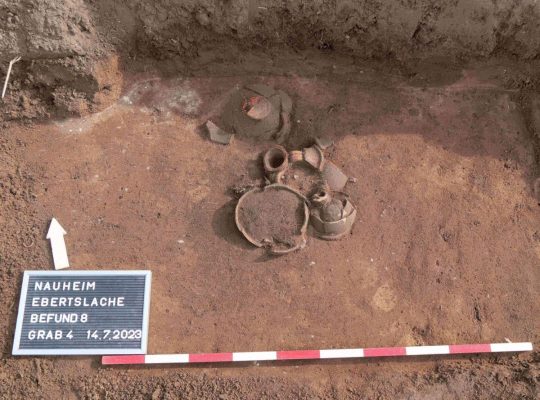
Roman-Era Burials Discovered in Germany
Students from Goethe University Frankfurt, in collaboration with the Hesse archeology department at the Darmstadt branch of the State Monument Protection Agency, uncovered 46 graves from various ethnic groups near Nauheim, a town southwest of Frankfurt in the central-western German state of Hessen.
They uncovered 46 graves from the time when Roman legions were stationed on the Rhine during a six-week training excavation. The grave goods indicate the deceased were immigrants with Gallic funerary customs who settled in the area in the middle of the 1st century A.D.
The team expected to find Roman remains because a Roman military camp was known to have been built in the Nauheim area. The graves of early settlers came as a surprise.
The burial ground, which eight students in two teams brought to light on a good 2,000 square meters, dates from the middle of the 1st century AD to the beginning of the 3rd century. They unearthed a total of 46 graves, 44 of them cremation burials, only two of them inhumations.
Anthropologists will now examine the bone remains from the corpse fire as well as the skeletons and determine the age at death, gender, and diseases.
The Nauheim graves show who settled on the borders of the Hessian Ried almost 2,000 years ago: immigrant ethnic groups in small-scale groups. Grave goods indicate Germanic military farmers who were deliberately attracted by the Romans from the north, took over the security service in the province on the border of the Roman Empire, and then settled down.

In the burial area, a 30-centimeter high vessel, in particular, indicated that the dead of newly arrived settlers found their final resting place here: a bronze bucket that probably served as a burial urn.
An early Nauheimer “in the bucket”. Burying a person in a bronze bucket and providing tools such as scissors or knives is atypical for Roman burials. This is also the first time that evidence of the grave enclosures mentioned has been found in southern Hesse, while the custom was widespread on the left of the Rhine in the east of Gaul in the late Iron Age (1st century BC) and the 1st century AD. For scientists, such unusual burials are clear signs that immigrants were buried here, bringing not only their culture but also their burial rites with them.
The bucket must have been imported here and probably cost a dinar or two,” said Professor Markus Scholz, head of the Archeology and History of the Roman Provinces course at Goethe University. In general, the grave goods – such as a complete urn made of green glass – were of high quality, which indicates a certain level of wealth of those buried.
There are also six rectangular ditch systems that can be viewed as the enclosure of special burials and, according to current knowledge, all belong to the burial ground’s founding phase. In some cases, there are additions such as a complete glass urn, which attest to the wealth of those buried.
By Leman Altuntaş.

#Roman-Era Burials Discovered in Germany#Nauheim Germany#Hessen Germany#ancient graves#ancient tombs#ancient artifacts#archeology#archeolgst#history#history news#ancient history#ancient culture#ancient civilizations#roman history#roman empire
44 notes
·
View notes
Note
“Are you trying to say that the Palestinians aren't the original people of Judea?” what a funny way to phrase that. what ethnic group does anon think “Judea” might be named after?
This is, I'm afraid, just as stupid an ask as the original anon. Again, the Jews are not the original inhabitants of Palestine/Judea/the southwestern Fertile Crescent! In fact, according to Jewish mythology, the Jewish claim to the land rests on the divinely sanctioned massacre of its previous inhabitants, which is a very bad justification by modern standards. Indeed, the original name of the land, according to those narratives, was Canaan--after, y'know, the Canaanites. Archeologically speaking, the ancient Hebrews are a subgroup that emerges gradually out of the other Canaanite/Northwest Semitic cultures in the region--it's clear that that's not actually what happened--but these people are not culturally, genetically, or religiously identical to modern Ashkenazi, Sephardi, and Mizrahi Jews. And having an ancient ancestral link to a distant place does not in fact give you property rights over that place, or else the United States would have a right to conquer Britain, partition the country, and expel the English.
The people in southwest Asia actually haven't suffered any major population ruptures in the last 2,000 years from what I understand; what has changed enormously in that time is culture and religion--Hellenization from the conquests of Alexander, Romanization and Christianization under the Roman Empire, and Islamization and Arabization under the Muslim conquests. But genealogically the Palestinians are pretty much continuous with the ancient Hebrews. Language and religion change a lot more easily than actual people do.
And this is why treating ethnicity--which is an identity category not the same as but entangled with all these historically contingent markers like language and religion--as the primary unit of moral concerns is a bad idea. You do not get to expel people from their homes because they do not practice the ways of their ancient ancestors!
And again, let me remind you--the original inhabitants of "Judea" (which has had many names) were a group of Neanderthals whose language has been forgotten. If we're going to use names as signifiers of the original inhabitants, we should probably rename the country something in Pleistocenese, along with most of Europe and western Asia.
#it really is impossible to have a normal conversation in the context of israel-palestine discourse#which is why i do not want to discuss that political context specifically#i just want to push back against this kind of reflexive shallow nonsense#that sees expression in many other contexts as well
46 notes
·
View notes
Text
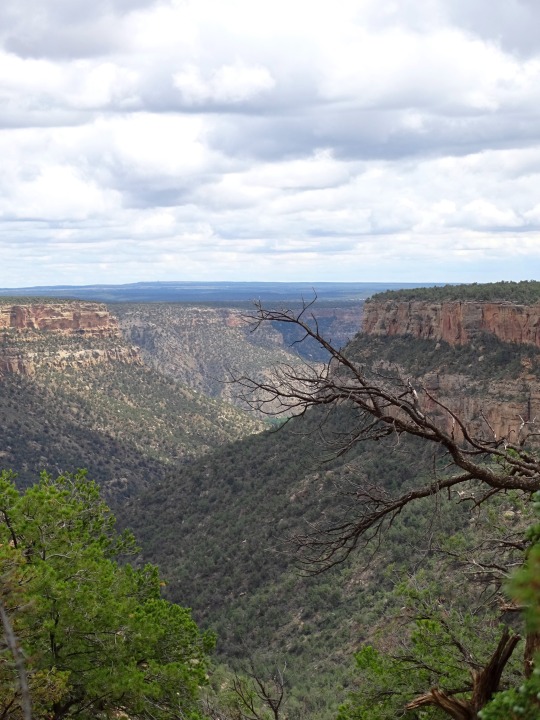
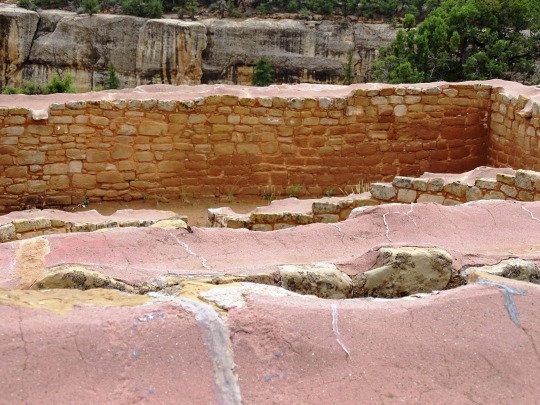

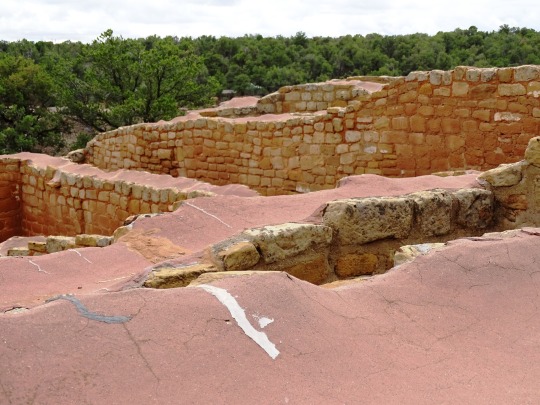


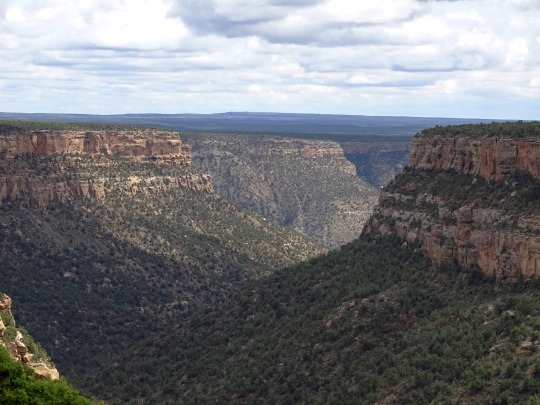



Mesa Verde National Park (No. 25)
Mesa Verde National Park, established in 1906, features some of the most well-preserved Ancestral Puebloan sites in the Southwest. More than 22,000 people may have lived on and around Mesa Verde at the beginning of the 1200s. But by the beginning of the 1300s, the area was depopulated, likely as a result of a prolonged drought or other social pressures. The inhabitants largely resettled in Arizona and the Rio Grande Valley of New Mexico, where their descendants live today as the Pueblo and Hopi people. (The park’s former inhabitants were once called the Anasazi, though the term – which is commonly cited as meaning “ancient enemy” in the Diné language – is considered derogatory by Pueblo people and has fallen out of use).
Mesa Verde’s crown jewels are its cliff dwellings, sprawling structures built in alcoves beneath the mesa tops, with likely uses including habitation, food storage, ceremony and ritual. More than 600 cliff dwellings are scattered throughout the park, though they represent just a fraction of the more than 5,000 known archeological sites within park boundaries.
Amid this archaeological treasure trove, Sun Temple stands out.
Source
#Sagebrush lizard#Mesa Verde National Park#Sun Temple#Ancestral Puebloans#Montezuma County#Native American history#Mountain West Region#UNESCO World Heritage Site#travel#original photography#vacation#tourist attraction#landmark#architecture#ruins#summer 2022#USA#archaeology#nature#flora#cliff#wildlfie#fauna#reptile#countryside
10 notes
·
View notes
Text


archeological research is an evolving field
(U̱o̖hạiñ͉, the Southwest Sea God; domain of steam and snow)
#ocs#original character#old gods#fantasy#digital artist#mango art#oc set: deixis#oc set: vien pantheon#hm. the font appears to have fucked up the diacritics.
4 notes
·
View notes
Text
DID POLYNESIAN VOYAGERS REACH THE AMERICAS BEFORE COLUMBUS?

History.com - May 25, 2023
According to science, voyagers from Moananuiākea reached America around 800 years ago. “A 2020 study found that Polynesians from multiple islands carry a small amount of DNA from indigenous South Americans, and that the moment of contact likely came some 800 years ago…”
Polynesian voyagers sailed without a compass or any other nautical instruments. Yet by reading the stars, waves, currents, clouds, seaweed clumps and seabird flights, they managed to cross vast swaths of the Pacific Ocean and settle hundreds of islands, from Hawaii in the north to Easter Island in the southeast to New Zealand in the southwest. Evidence has mounted that they likewise reached mainland South America—and possibly North America as well—long before Christopher Columbus.
“It’s one of the most remarkable colonization events of any time in history,” says Jennifer Kahn, an archeologist at the College of William & Mary, who specializes in Polynesia. “We’re talking about incredibly skilled navigators [discovering] some of the most remote places in the world.”
Tracing Polynesian Ancestry
Based on linguistic, genetic and archeological data, scientists believe that the ancestors of the Polynesians originated in Taiwan (and perhaps the nearby south China coast). From there, they purportedly traveled south into the Philippines and further on to New Guinea and the Bismarck Archipelago, where they mixed with the local populace. By around 1300 B.C., a new culture had developed, the Lapita, known in part for their distinct pottery.
These direct descendants of the Polynesians rapidly swept eastward, first to the Solomon Islands and then to uninhabited Vanuatu, New Caledonia, Fiji, and elsewhere. “The Lapita were the first ones to get into remote Oceania,” says Patrick V. Kirch, an anthropology professor at the University of Hawaii at Mānoa, and author of On the Road of the Winds: An Archeological History of the Pacific Islands before European Contact. “It was really a blank slate as far as humans were concerned.”
By the 9th century B.C., the Lapita had made it as far as Tonga and Samoa. But then a long pause ensued without further expansion. Researchers note that, beyond Tonga and Samoa, island chains are much further apart, separated in some cases by thousands of miles of open ocean, and that the winds and currents generally conspire against sailing east.
Perhaps Lapita boats simply weren’t up to the task. Moreover, as Kirch points out, the closest coral atolls had not yet stabilized by that time. “It’s possible that there was some voyaging past Samoa,” he says, “but they would have found just coral reefs and not actual land they could settle.”
Double-Hulled Canoes Accelerate Expansion
During the long pause, a distinct Polynesian culture evolved on Tonga and Samoa, and voyagers there gradually honed their craft. In time, they invented double-hulled canoes, essentially early catamarans, lashing them together with coconut fiber rope and weaving sails from the leaves of pandanus trees. These vessels, up to roughly 60-feet long, could carry a couple dozen settlers each, along with their livestock—namely pigs, dogs and chickens—and crops for planting.
“They now had the technological ability and the navigational ability to really get out there,” Kirch says.
Though the exact timeline has long been disputed, it appears the great wave of Polynesian expansion began around A.D. 900 or 950. Voyagers, also called wayfinders, quickly discovered the Cook Islands, Society Islands (including Tahiti), and Marquesas Islands, and not long after arrived in the Hawaiian Islands. By 1250 or so, when they reached New Zealand, they had explored at least 10 million square miles of the Pacific Ocean and located over 1,000 islands.
“You can fit all of the continents into the Pacific Ocean,” Kahn explains. “It’s a huge, huge space to traverse.”
Even the tiniest and most remote islands, such as Pitcairn, did not escape their notice. As Kirch points out, no one else in the world was remotely capable of such a feat at that time. “Around 1000 A.D., what were Europeans doing?” Kirch says. “Not much in the way of sailing.” He adds that, as late as the 15th century, even the most accomplished European seamen, like Vasco da Gama, were merely hugging the coast.
Easter Island Among Many Inhabited by Polynesian Voyagers
The Polynesians did not have a system of writing to record their accomplishments. But they did pass down stories orally, which tell, for example, of how Hawaiian settlers came from Tahiti, more than 2,500 miles away. “Where the sun rises, in Hawaiian understanding anyway, is a place where the gods reside and our ancestors,” says Marques Hanalei Marzan, cultural advisor at the Bishop Museum in Honolulu. “To get to that place is probably one of the reasons why the migration east continued.”
(As an April 2023 study confirms, Polynesian voyagers sometimes sailed west as well into what’s commonly referred to as the Polynesian Outliers.)
Each island chain developed its own unique characteristics. On Easter Island, for instance, the inhabitants constructed giant stone statues. Yet all Polynesians spoke related languages, worshipped a similar pantheon of gods, and built ritual sites with shared features, Kahn explains.
The various islands also maintained at least some ties with each other, particularly during the heyday of Polynesian expansion. “It’s not just that they came from a place and left and never made their way back,” Marzan says. “They actually continued those relationships.”
Evidence that Polynesian Sailors Reached Americas
Most experts now believe the Polynesians crossed the entire Pacific to mainland South America, with Marzan saying it happened “without question.” Stanford University biologist Peter Vitousek has similarly told HISTORY that “we’re absolutely sure,” putting the odds of a South American landfall in the 99.9999 [percent] range.”
For one thing, experts note that Easter Island (also known as Rapa Nui) lies only about 2,200 miles off the South American coast, and that Polynesian voyagers, capable of locating a speck of rock in the vast Pacific, could hardly have missed a giant continent. “Why would they have stopped?” Kahn says. “They would have kept going until they couldn’t find any more.”
Genetic evidence backs up this assertion. A 2020 study found that Polynesians from multiple islands carry a small amount of DNA from indigenous South Americans, and that the moment of contact likely came some 800 years ago (not long after the Vikings, the best European sailors of their era, made landfall on the Atlantic coast of the Americas).
Archeologists have likewise found the remains of bottle gourds and sweet potatoes, both South American plants, at pre-Columbian Polynesian sites. Some scientists speculate that the sweet potato could have dispersed naturally across the Pacific, but most agree that the Polynesians must have brought it back with them. “Try to take a sweet potato tuber and float it,” Kirch says. “I guarantee it won’t float very long. It will sink to the bottom of the ocean.”
Poultry bones from Chile appear to show that Polynesians introduced chickens to South America prior to the arrival of Columbus, though some scientists have disputed these findings. Meanwhile, other researchers analyzing skulls on a Chilean island found them to be “very Polynesian in shape and form.”
Less evidence ties the Polynesians to North America. Even so, some experts believe they landed there as well, pointing out, among other things, that the sewn-plank canoes used by the Chumash tribe of southern California resembled Polynesian vessels.
What Happened to Polynesians in Americas?
No Polynesian settlement has ever been unearthed in the Americas. It therefore remains unclear what happened upon arrival, particularly since, unlike the Pacific islands, these landmasses were already populated. Perhaps, Kahn says, “they got up and left and went back.”
When Captain James Cook explored the Pacific in the late 1760s and 1770s, thus ushering in a wave of Western imperialism, he recognized the Polynesians’ exemplary sailing skills. “It is extraordinary that the same nation should have spread themselves over all the isles in this vast ocean, from New Zealand to [Easter Island], which is almost a fourth part of the circumference of the globe,” he wrote.
Eventually, however, as they colonized the islands and suppressed native languages and cultures, Western powers began to downplay Polynesian achievements, according to Marzan, who says they assumed “that the people of the Pacific were less than.”
Some falsely claimed, for instance, that Polynesian sailors had merely drifted along with the winds and currents. (It didn’t help that, at the time of European contact, many Pacific Islanders no longer used large, oceangoing canoes. Some, like those on Easter Island, had already chopped down all the tall trees needed to produce them.)
Worst of all, European diseases decimated the Polynesian population. “It was this massive, devastating loss,” Kirch says. “And when you have that, your society really falls apart.”
Before long, most remaining Polynesians began sailing with Western techniques. More recently, though, the old traditions have been revived, starting around 1976, when the Polynesian Voyaging Society sailed, without instruments, from Hawaii to Tahiti. They have since embarked on numerous other expeditions, including a worldwide voyage from 2013 to 2017.
“The Polynesian Voyaging Society has really inspired many cultures across the Pacific to reconnect with their traditional practices,” Marzan says. Once again, double-hulled canoes are plying the ocean.
5 notes
·
View notes